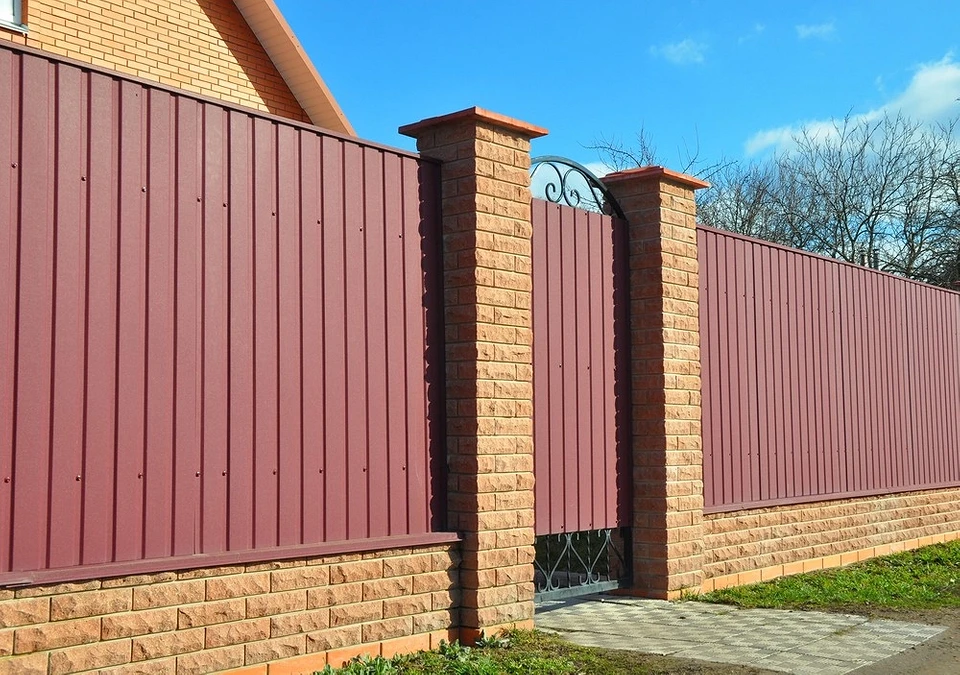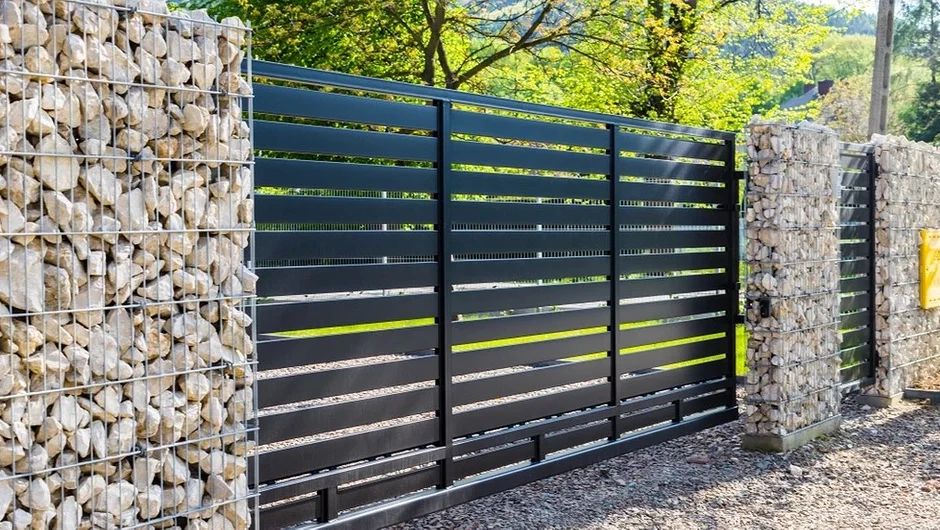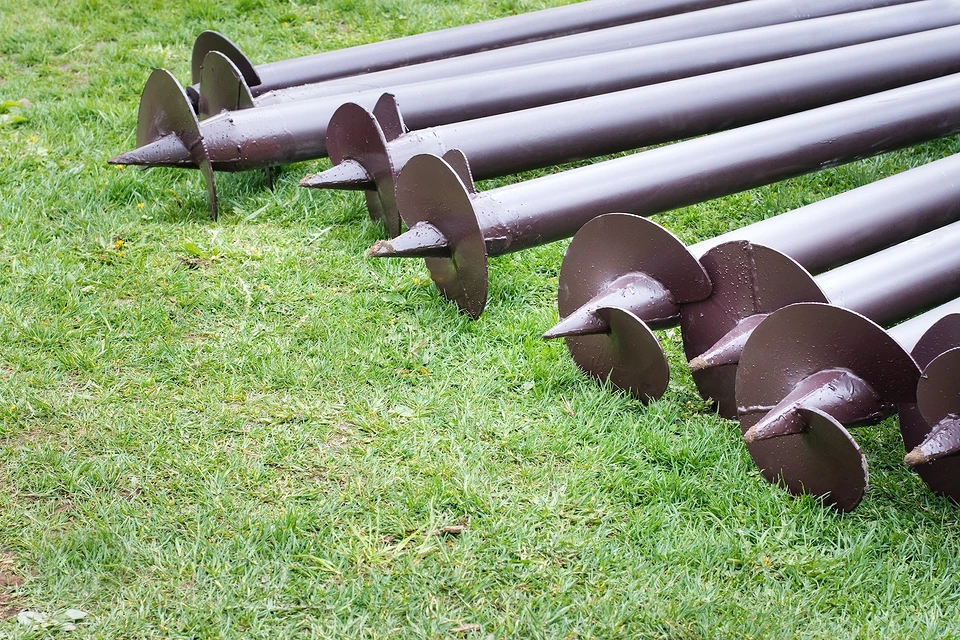Together with experts, we analyze which base will be better for fences made of mesh, and corrugated sheets on metal and brick pillars, and also talk about the features of a pile foundation for a fence.
Landscaping will not be complete without a fence. You can choose from a large number of fencing options: from primitive chain-link mesh to forged lattice and walls made of natural stone. However, all options have one common feature: reliable support is required that will protect the structure from erosion and soil washout, as well as seasonal soil deformations. Experts talk about foundation options for a fence with metal and brick pillars.
Choosing a material for pillars
Most fences, which are made from profile sheets, wooden picket slats, various types of mesh, as well as gratings made of steel rods, have a similar design. The main material – boards, sheets, or rods – is attached to the longitudinal joists, forming sections. The fragments obtained in this way must be installed vertically and securely fixed. To do this, the sections are attached to the pillars. Most often, for structures made of sheet materials, mesh, and gratings, supports made of metal and brick are used.
The choice between steel and brick does not have clear criteria, except the load-bearing capacity of the structure. Today, in construction, a “hybrid” solution is used, in which a steel pole serves as a rod for a support made of decorative facing bricks.
For fences made of heavy materials, as well as for tall structures made of light materials that can withstand significant wind loads, reliable support is required. In this case, a brick pillar on a strong and reliable foundation with a durable steel pipe inside will be the most effective solution.
When choosing a foundation for pillars, load-bearing capacity also plays an important role. We’ll share three budget-friendly ways to create a solid foundation.
3 types of fence foundations
Each of the three projects has its characteristics and one thing in common – any of these fence foundations can be assembled with your own hands.
1. For mesh fencing on metal posts
Mesh is one of the lightest materials used for the construction of fences, which practically does not experience wind load. Being light in weight, mesh fencing does not require strong supports or a powerful foundation.

To construct the fence supports made of steel pipe with a diameter of 42 millimeters and a height of 1.5 to 2.5 meters are used. They are installed to a depth of 1 meter. According to one of the accepted methods, before installing the pole, a hole is drilled in the ground, twice the diameter of the pipe.
After installing the pipes, approximately half of the hole is filled with crushed stone to create drainage. Then a layer of concrete is poured over the compacted crushed stone to the surface of the soil. The crushed stone cushion absorbs the energy of seasonal soil deformations as a result of frost heaving and prevents the pillars from deviating from the vertical axis.
On difficult types of soil, for example, wet clay, the technology can be supplemented by installing a waterproofing “glass” with an uninsulated bottom in the hole. A cylinder of roofing felt is placed in the well, and then support is installed, following the procedure described above.
2. For fencing made of corrugated sheets on steel or brick pillars
Profiled sheet is a popular material for fences with a height of 1.8 to 2.5 meters. If desired, the height of the structure can be increased by arranging standard sheets in two rows vertically. Manufacturers of profiled sheets provide a wide selection of colors – white, green, brown, blue, red, and others. It is possible to purchase profiled sheets with a polyester coating and various decorative effects, for example, with imitation of natural stone masonry or the structure of natural wood.
Corrugated sheet fencing can be installed on steel or brick supports, as well as on brick posts with a steel rod.

The diameter of the structures is selected depending on the height and thickness of the sheet. Steel ones are available in two versions – square and round pipes. For a fence with a height of 1.8-2 meters, supports are used from a square pipe with a cross-section of 80×80 mm or from a round pipe with a diameter of 51 mm and a minimum wall thickness of 3 mm. To install a fence on your own, it is more convenient to use ready-made posts 2.5 meters high, equipped with plugs at the upper end and special fastenings for corrugated sheets. Fastenings allow you to mount sheets without longitudinal joists.
A reinforced concrete strip serves as a reliable base for a high fence made of corrugated sheets. Concrete is reinforced with steel or composite reinforcement along the entire length of the foundation. The depth of the strip foundation for the fence in this case ranges from 30 to 70 cm, depending on the type of soil and groundwater level. Expertise with the involvement of specialists helps determine these parameters.
Before constructing the foundation, markings are made on the site to determine the number of supports required. The distance between them is usually equal to the length of the profiled sheet and is 2 meters. Then a trench with a width of 25 to 40 cm is dug along the entire perimeter. At the intended points for installing the pillars, holes 50 cm deep are made with a hand drill. Ruberoid sleeves are installed in the holes.
After installing the pillars, they are driven into the ground to a shallow depth. To fix the support in place before pouring, 20 cm is usually enough. After this, reinforcement is laid in the trench. A sand cushion is created at the bottom of the trench. After backfilling, the sand is spilled with water and compacted until a layer of at least 10 cm thick is obtained. In the next stage, formwork is erected in the trench. At the final stage, a pre-prepared concrete solution for the fence foundation is poured into the formwork, into which fine crushed stone is mixed. At this stage, the final control of the installation accuracy of the pillars is carried out using a building level.
After completing the work, it is necessary to take a technological break for a week so that the concrete gains strength. After this, you can remove the formwork.
3. Screw pile foundation for all types of fences
Fences on screw piles are a relatively new technology for individual construction. A pile foundation has several advantages over a strip foundation: more affordable cost, a minimal amount of excavation work, simplicity, and efficiency of installation. A definite disadvantage is that the supports are not interconnected. Because of this feature, the gap between the fence and the ground is not closed, as is the case with a strip foundation. However, this feature is compensated by an equally strong fixation of the piles in the ground below the freezing depth, which effectively protects the fence from the effects of frost heaving. Thanks to this, such a structure will last longer than a fence on concrete pillars. Screw piles are made of durable steel pipes of a fixed length with a sharp tip and blades, with the help of which the pile is screwed into the ground, like a self-tapping screw into wood.
For light fences made of chain-link and corrugated sheets up to 2 meters high, 57 mm piles are used. For heavy and tall structures on steel and brick pillars, more powerful piles with a diameter of 76 mm are used.
Screw piles are installed mechanically using special drives. This work can be done manually by two people using levers or a crowbar. The verticality of the installation is controlled using a bubble level with a magnetic base.
It is permissible to fasten pillars made of steel pipes to the shanks of piles using electric welding. To install brick supports, it is necessary to cut the shanks below the ground level and strengthen them on top of the caps – special platforms used for attaching structures located on top of the pile. If it is necessary to make brickwork to close the gap between the fence sheets and the ground, the pile shanks are connected by a steel channel located at ground level, which serves as the foundation for the masonry.
Read more: Instead of a fence: 7 ways to make your summer cottage more private




